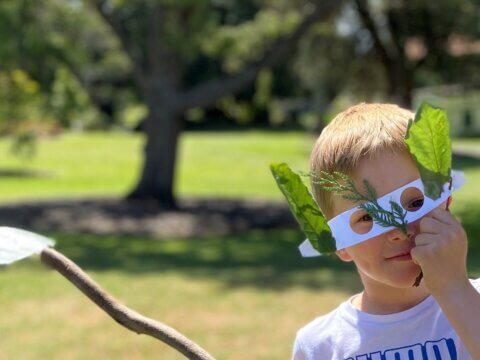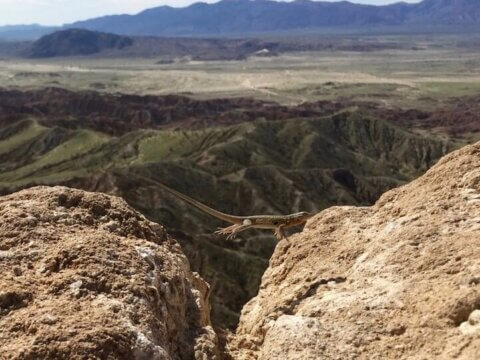EVERY CHILD DESERVES TO SEE THE STARS: Five Ways to Make It So. Please Share Your Suggestions.
Starlight is a good source of Vitamin N. A few years ago, Madhu Narayan, a Girl Scout leader in San Diego, told me a story about a girl who saw the universe.
“In my first counseling job, with another organization, I took children with AIDS to the mountains who had never been out of their urban neighborhoods. One night, a nine-year-old woke me up. She had to go to the bathroom,” said Narayan, as I quoted her in The Nature Principle.
“We stepped outside the tent and she looked up. She gasped and grabbed my leg. She had never seen the stars before. That night, I saw the power of nature on a child. She was a changed person. From that moment on, she saw everything, even the camouflaged lizard that everyone else skipped by. She used her senses. She was awake.”
Madhu’s story illustrates two issues: One is how important seeing the stars can be to a child’s perception of her or his personal universe, as well as the one beyond the Earth. The other issue is that such an experience is increasingly rare. In the journal Environmental Health Perspectives researcher Ron Chepesiuk reports,
“When a 1994 earthquake knocked out the power in Los Angeles, many anxious residents called local emergency centers to report seeing a strange ‘giant, silvery cloud’ in the dark sky. What they were really seeing — for the first time — was the Milky Way, long obliterated by the urban sky glow.”
These days, for children and adults, sky blindness is common. Sure, we can download one of those stargazing apps and point our smartphones at the sky to “see” what’s up there. But somehow that’s, well, not the same experience.
Apps aside, two-thirds of the U.S. population and more than one-half of the European population may have already lost the ability to see the Milky Way with the naked eye. When air pollution and urban domes of artificial light obscure our view of the night sky, our mental and physical health pay a price. Stars or no stars, natural darkness has value; our biological clocks count on it. Researchers in Israel have linked the amount of artificial nighttime light to higher rates of breast cancer.
Although some cities now require low-pressure sodium streetlights and other light pollution controls, regulation alone won’t cure sky blindness, in daytime or night. What we need most is a perception of value.
Ultimately, our relation to the sky is not only about health (and we do need more research on that front), but also about wonder. Trevor Hancock, a professor at the University of Victoria’s School of Public Health and Social Policy, asks this question: “If we can’t see the stars, how will we know our place in the universe?”
Every child deserves to know the stars, to have the kind of memory that Rosanna Nydia Snyder, of Seattle, Washington, shared with me last year, which I then shared in Vitamin N.
“Last night, right before bedtime,” she wrote, “my four-year-old daughter wanted to invite us to a ‘perfect party’ that she was adamantly planning for right that very moment. Not tomorrow, but ‘tonight.’ This ‘perfect party’ involved going outside on the porch and gazing at the stars while drawing pictures.”
She continued: “We could have easily ignored her desires and sent her straight to bed, but we knew there was so much more value in saying yes to her invitation. To be outside gazing at the stars required no more than bundling up with jackets and blankets; watching the sky grow dark, and talking about the different moon phases. We seized her interest and made sure to show that we supported her passion right then because I never want to extinguish her flame for the outdoors while it’s continuing to grow more bright.” To her, the key to outdoor experience is to keep watching for these moments of confidence and support her daughter’s self-driven outdoor experiences.
Rosanna’s daughter is lucky. She lives where stars are sometimes still visible, at least part of the time, even with all that rain. And she has perceptive parents. But all children deserve to see the stars, including those without such perceptive parents, and those who live where starlight has faded completely.
How do we help all kids look up? We welcome your suggestions.
Five Tips for Stargazing and Skywatching from “Vitamin N”
1. Explore the universe together.
In your child’s first months and years, and beyond, go to a park together, spread out a blanket, lie side by side for an hour or more; look up through moving leaves and branches at clouds or moon or stars. Bring water and milk. You may be there a long time.
2. Set a star date.
If your family is lucky enough to live where the stars are visible, stargaze in the evening or very early morning. In the yard, from a balcony, or out beyond the city lights, take a blanket, binoculars, or small telescope, and stargaze together. With your kids, locate a few key constellations and orient to those. Air and light pollution prevent two-thirds of the U.S. population and more than half of Europe’s population from seeing the Milky Way with the naked eye. Schools, sky-watcher groups, amateur meteorologists, and even star charts in our smartphones can help. Resources include the sky-awareness initiative. International Dark-Sky Association. Also, see How to Start Stargazing With Your Kids.
3. Study the constellations.
Learn where the North Star is, in relation to other constellations. “If you find yourself lost in the wilderness — or out at sea — a few useful star navigation techniques can help you find the way again,” recommends the Appalachian Mountain Club. “Celestial navigation draws on the placement of the stars to infer location and it remains one of the best ways to find your north-south position. The key is to use the angles between the stars and the horizon to locate your position on the globe.” Learn more about celestial navigation at Astronomy.com
4. Set up a world-watching window.
Not every child is able to leave the house. Some have mental, physical disabilities or an illness that limits or even prevents outdoor activities. They can still experience moon watching, stargazing (if stars are visible), cloudspotting, bird-watching, and more. Keep handy: a nature notebook, field guides for birds and stars, binoculars, a telescope, a digital camera with a telephoto lens, and maybe even a sound recorder to capture the sounds of the natural world.
5. Join or create stargazing partnerships.
Through scouting organizations, schools, places of worship, astronomy clubs, planetariums, museums, businesses and city, county or state recreation departments, join, promote or create skywatching programs with a special focus on urban neighborhoods. One example, the Museum of Science & Industry (MOSI) in Tampa, Florida, which offers scholarships for kids from low-income families to go to MOSI Science Camp; gives free training to STEAM (Science, Technology, Engineering, Arts, and Math) educators across Tampa Bay; and sends its mobile science lab around the state of Florida “to educate and inspire.”
If you know of additional stargazing ideas or programs for children who rarely see the stars, anywhere in the world, please share them in the comments section of this blog post.
-
Network News
Earth Day: Young leaders advocate for change
-
Feature
Nature photographer Dudley Edmondson has a vision for the representation of Black and Brown faces in the outdoors
-
Richard Louv
EARTH MONTH: You're part of the New Nature Movement if....
-
Voices
Placemaking: How to build kinship and inclusive park spaces for children with disabilities
-
Network News
Children & Nature Network founders release report on global factors influencing the children and nature movement








Commentaries on the C&NN website are offered to share diverse points-of-view from the global children and nature movement and to encourage new thinking and debate. The views and opinions expressed are those of the author(s) and do not necessarily reflect the position of C&NN. C&NN does not officially endorse every statement, report or product mentioned.